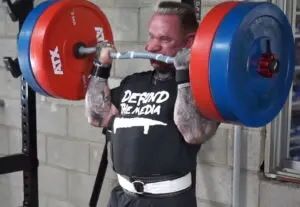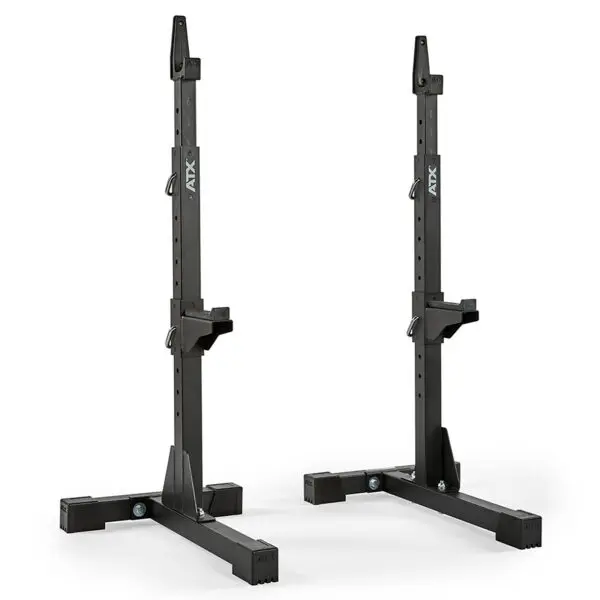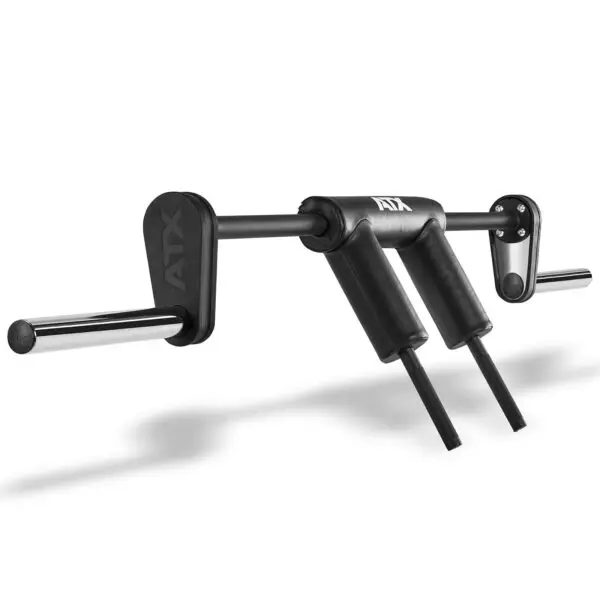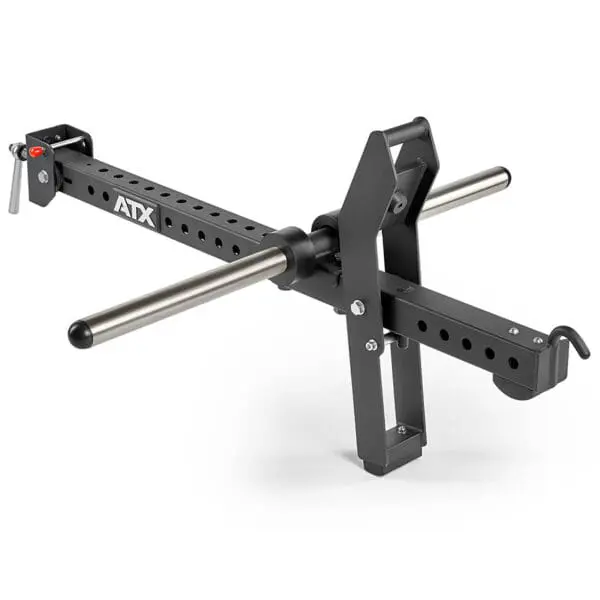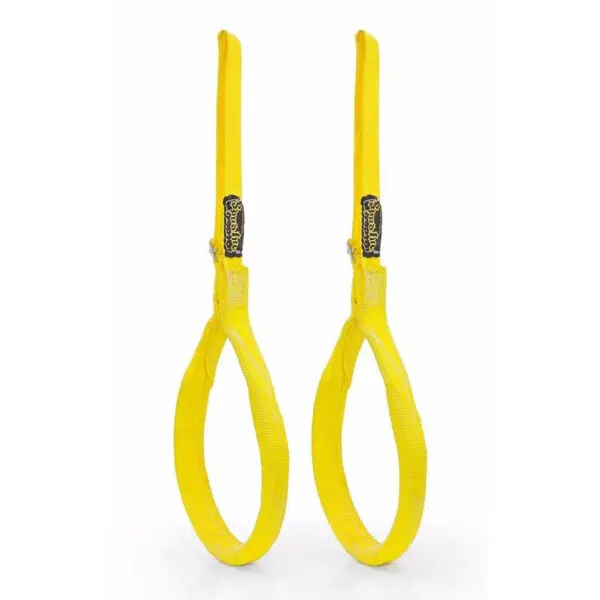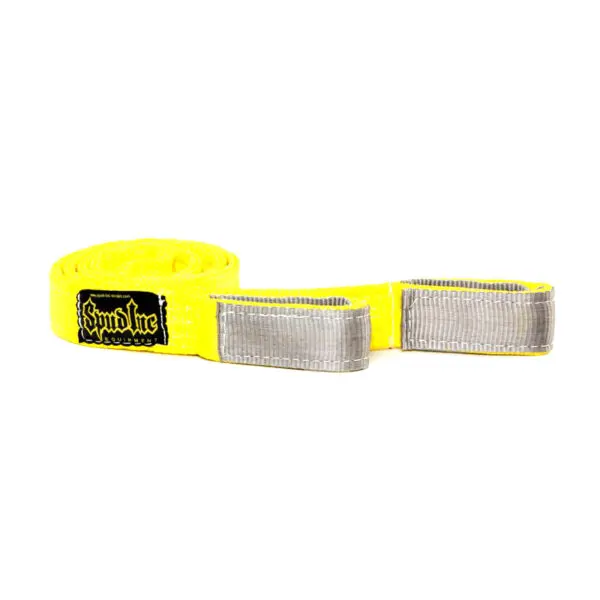
 LEGS - Build Muscle at Home or the Gym
LEGS - Build Muscle at Home or the Gym
Exercises for the Upper and Lower Leg

Best equipments for Legs
-
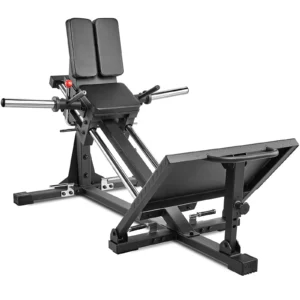
ATX® Compact Leg Press ATX-CLP-700
$1,995.00Add to cart -
ATX® Squat Stands 510
$395.00Read more -
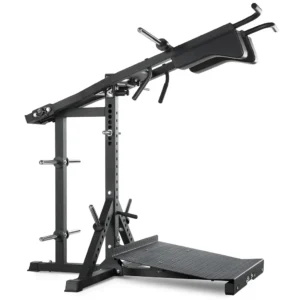
ATX® Lever Arm Squat Pro – Viking Press
$2,145.00Read more -
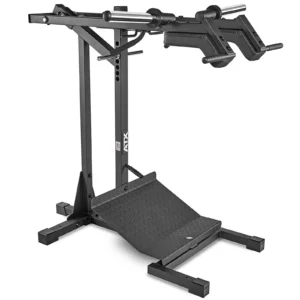
ATX® Squat Calf Machine 600
$1,365.00Add to cart -
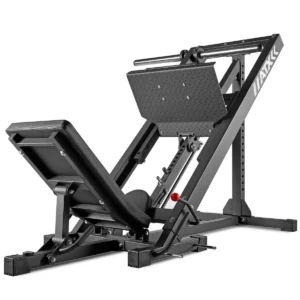
ATX® 45 Degree Leg Press
$2,925.00Read more -
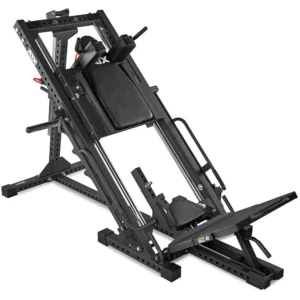
ATX® Leg Press/Hack Squat 4in1 Combo
$3,950.00Add to cart -
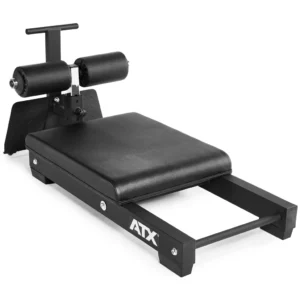
ATX® Floor Glute Bench
$539.00Add to cart -
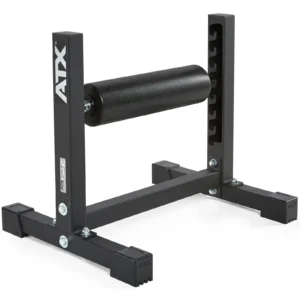
ATX® Split Squat Stand
$225.00Read more -
ATX® Belt Squat Option
$539.00Add to cart -
Spud Inc Zercher Straps
$190.00Select options This product has multiple variants. The options may be chosen on the product page -
Spud Monster Multi Strap
$125.00Select options This product has multiple variants. The options may be chosen on the product page
Legs
Frequently Asked Questions

 What are the anatomy and functions of my leg muscles?
What are the anatomy and functions of my leg muscles?
Let’s begin with some basic anatomy. Your legs aren’t just two bits of meat wrapped around some bones. They’re actually a complicated set of muscles that work in tandem to lug you around. I’m not going to mention each and every muscle—otherwise we’d be here all day—but I’m going to take a shot at pointing out some of the most important bits. So let’s get started.
First, you have the quads. These work whenever you do squats. These are the big muscles at the front of your leg that bulge when they’re activated (or will bulge after you’ve paid some attention to them).
Next up are the hamstrings. They’re a group of muscles that allow your hip joint to extend and your knee to bend. Barbell lunges and lying leg curls will get these muscles working like crazy. Then there are the calves. I’ve written a whole article on these alone, but they are an important part of your leg so I do need to mention them here. Standing and seated calf raises are going to get them working nicely.
There you have it! These are the major muscles of your legs, from top to bottom, that you’ll be working on during leg day.

 How hard should I work to develop my leg muscles?
How hard should I work to develop my leg muscles?
Now that you have the basics, I’ll let you in on a little secret: your legs are working all day long. They hardly ever rest, so if you really want to build them, you’re going to work a lot harder than you realise. You will have to force those legs to grow, and believe me when I say that they are going to try and resist you. But don’t listen to them!
Not only will you need to work harder to get great legs, but you’ll need to use more weight on them than you might expect. You’ll want to start off with 4 to 6 reps when you’re doing compound exercises to build that strong foundation. Once you have this, you can start doing isolation exercises and choose between moderate (8 to 12) or high-rep ranges (15 to 20).
As I’ve said over and over again, your form is what it’s all about. If your form is off, you’re not going to see the results you want. Bad form could also lead to injury, so you definitely want to make good form your priority.

 What are the best leg exercises and workouts?
What are the best leg exercises and workouts?
Like any workout routine, you have to start slowly if you’re new to leg training. That’s why I’m going to take you through the beginner workouts, then move onto the moderate and then some advanced stuff. No matter which workout you start with, make sure you warm up! Remember, you’re going to push your legs pretty hard here.
1. The goblet squat
You didn’t think you’d be working your legs without squatting, did you? The goblet squat is where it all begins. Start by holding a kettlebell close to your chest with your elbows bent, then push those hips back and start squatting down, nice and slowly. You need to feel the burn here. Lower yourself until your thighs are parallel to the ground, then pause and lift yourself up again. If you have access to a mirror, use it. This will help you keep tabs on movement and check if your back is still straight and your knees are still aligned with your feet.
2. Step-ups with a dumbbell
When it comes to single-leg exercises, you can’t do much better than step-ups, and when you add in a dumbbell, it makes this exercise much more intense. Holding the dumbbells at your sides, step up onto the bench or box and contract your glutes. Then bring your other leg up so you are standing on the bench before you go back to the starting position.
3. The glute bridge
Strong glutes = strong legs. Even if your glutes are not the focus of your leg workout, you can’t leave them out. What’s great about the glute bridge is it is very effective in strengthening your glutes, plus you can do it anywhere. Just lie down on any flat surface with your face towards the ceiling. Place your arms to your sides, bend your knees and place your feet close together. Lift your buttocks until your torso forms a downward slant or “bridge” from your knees to your head. Keep your torso nice and straight and make sure that you activate your glutes.
4. Calf raises
A good pair of calves is a sign of strong legs. If you’re looking to get a pair of these, you’re going to work hard for them too. Luckily, calf raises are an easy and beginner-friendly way to start getting those legs in shape. Start in a standing position and raise your heels until you’re up on your toes before lowering yourself again. If you want to take this exercise a little further, do it while standing on a raised platform.
5. The hex bar deadlift
Now let’s move onto something a little more taxing. The hex bar deadlift is for those with a little more practice under their belt. Bend your knees to grab both handles of the hex bar. Stand up straight until the bar is right above your knees, then lower your hips as low as possible. Keep your chest high and your head facing forward throughout the exercise.
6. Walking lunge
This is another great leg exercise that allows you to increase your gains by adding in some dumbbells. Lunges aren’t just about stepping forward, lowering yourself and hoping for the best. As always, your form needs to be on point. You can start off with or without dumbbells. Take a big step forward with one leg and bend your knee so your front leg forms a 90-degree angle. Bend your back knee so your back leg is nearly touching the floor. Pause for a moment and then drive yourself back up. Step your other leg forward to complete the “walking” motion. Repeat.
7. Farmer’s walk
The farmer’s walk is an exercise we love and hate at the same time. The best thing about this exercise is that there’s no limit to the amount of weight you can carry. It’s completely up to you and your strength level. But this doesn’t mean you should be taking it easy. Remember what I said before? Your leg muscles need to work hard if you want to get anywhere. To do this exercise, walk around while carrying some heavy dumbbells or kettlebells placed on your sides. It really is that simple.

 What's the best equipment for leg day training?
What's the best equipment for leg day training?
Now let’s move onto the equipment that will change the way you think about leg exercises. Yes, you can do a lot with just your body weight, but there will come a time when your strength will demand greater resistance. Using leg exercise equipment can help you achieve your leg goals and take you where you want to go a lot quicker.
So let’s begin with the most popular leg equipment in the market:
1. Leg extension machines
Leg extension machines are going to kill your quads—leg extensions are perfect for isolating the front and the sides of your thighs—so be prepared to work hard once you sit on any of these.
To use this machine, put yourself in an upright sitting position then extend your legs while raising the padded bar. Pause for a moment before you bring them down again. These bars are connected to a set of weights and you have full control over the amount of weight you’re lifting. You need to make sure that you’ve adjusted the seat to suit your specific height so that your knees will be aligned with the machine’s axis.
2. Inner and outer thigh machines
These thigh machines have been built to shape and strengthen your hips and legs. They also help to strengthen your knees, which, let’s face it, becomes more important with age. A good inner and outer thigh machine comes with a variety of stop and start positions.
3. The squat cage
You can call this a squat cage, power cage or power rack, but it all means the same thing: a powerhouse trainer for your legs. This equipment is used for strength training, specifically for free weight barbell workouts. What makes it really popular is that it doesn’t restrict your movement in the same way the Smith machine does. Basically, it’s a frame with four vertical posts on all sides, and how you use it will depend on your abilities and know-how.
I can’t say this enough: form is what it’s all about, no matter what type of exercise you’re doing, and this includes exercises done with a squat cage. It’s always better to use less weight with good form than to try to impress the other guys at the gym with more weights and poor form!
4. Kettlebells
Kettlebells are great for a vast number of leg exercises, from squats to the farmer’s walk. Do yourself a favour and get a couple of these weights within your strength range plus a pair that is 10% more beyond your current capacity. This will give you something to aim towards for your succeeding leg workouts.
5. The jump rope
The jump rope is a great addition to any leg workout routine because it’s super effective and it’s as basic as it gets. Jump ropes have no flashy gizmos, bells or whistles. It’s just your own body working against its own weight in order to build muscle.
6. Resistance bands
You must be aware of the perks of resistance bands by now. No matter how you choose to use them, whether it’s for toning your glutes, stretching your hamstrings or working your thighs, these bands will do a lot for you, so make sure you get yourself a set if you haven’t done so yet!
7. Leg press machine
The leg press and leg extension machines have similarities, but the biggest difference is that the leg press offers a compound exercise that works everything from your hip, knees and thighs, whereas the leg extension machine is all about isolating your quads. With the leg press, you get to choose how heavy the weights are so you have full control over the intensity of your workout.
8. The calf press
Think doing standing calf raises is the hardest part of leg day? Try using the calf press machine. Of course, you can choose to use this machine without weights, but you will really see results by adding weights. Those interested in unweighted presses should aim for high reps.
9. The thigh master
The thigh master is a handy tool that you place in the middle of your thighs and then squeeze using both legs. It’s small enough to carry just about anywhere.
Now that you have the basics down, it’s time to get going and get those legs working. Remember, the harder you train today, the more you’ll thank yourself tomorrow, especially when the time comes to show off those big and strong tree trunk legs.

 Does training Legs boost Testosterone?
Does training Legs boost Testosterone?
Training legs increase testosterone – but who cares? According to the studies, it’s such a small increase that the effects are negligible. Training legs won’t make your voice deeper, your hair grow faster, or your slug grow any bigger. Training legs won’t necessarily make any of your other body parts grow faster. HOWEVER, training legs can still provide a few psychological benefits, such as the sweet feeling of accomplishment.
Training legs is hard, which is why most people don’t like to train them. So, if you do train them, you’ll probably feel good about yourself. Feeling good means more confidence in yourself and your ability to perform in the gym. This translates to your self-belief in general life, which is most important.
A confident man as seen in the movies probably has a good amount of testosterone flowing. Conversely the more stress (cortisol) we have, the less testosterone we produce. Cortisol and testosterone are mutually exclusive because we can only produce/utilise one at a time. So, if you do hard things, like training legs, or just training in general, you’ll increase your confidence, therefore your absorption of testosterone. It’s that simple – do HARD THINGS.

 How Long should Leg Day take?
How Long should Leg Day take?
The length of a leg day or leg training session will depend on your goals. Competitive bodybuilders might train them for 2-3 hours at a time, 1, 2 or 3 times a week (more if their legs are a weak body part from an aesthetics standpoint). The extra-long session time is to create as much stimulus for growth as possible. However, training is their full-time job, so you might not have 2-3 hours to dedicate to a leg session, and you might not want to have bodybuilder-type legs, either.
Powerlifters might also follow the same 1–3-hour timeframe for leg days/squat and deadlift days. This is due to the long rest times needed to recover between sets (for maximum intra-set recovery). An athlete might do the same, 1-3 hours, including sport-specific exercises such as sprint and footwork drills.
Assuming you are a beginner or have been training in the gym for a while and are looking to make decent strength and size gains, anywhere from 20 minutes-1 hour is a good starting point for your leg training duration. A shorter workout might be a more intense, like a HITT/explosive style workout. A longer leg workout might be a more moderate, pump style workout.
There is no right answer here, as the number of exercises you do, the rest times, the warmup required, all play a part in leg session duration. In general, just do what you enjoy, and train your legs enough to get the results you want, for competition or personal satisfaction – whether that’s 10 minutes, 3 hours, 1 day a week, 5 days a week, or anywhere in between.

 How often should I train my Legs?
How often should I train my Legs?
The frequency of leg training sessions you should do per week depends on your goals, and the time you have available. Professional athletes can theoretically train legs as often (or as little) as they want. Someone with good leg genetics can probably just train one or twice a fortnight and still see great gains.
You might need to train legs more often to get results. Some on the other hand less often. Others will respond better with lighter weights, others with heavier weights. Try the different methods and see what leg workout you best respond to. Another important factor is what you are excited to do. Training should be both fun and focused, whether you compete or not.
If you are a beginner or just want a simple answer, train your legs 1-2 times a week, for at least 30 minutes. The workout should consist of 1-3 exercises of your choice. Good compound leg exercises would be squats, deadlifts, lunges (pick one or two of those). Throw in a good isolation exercise to start with. My recommendation would be leg extensions and leg curls (pick one or both, if you want).
Start out with 3 sets, 8-12 reps on each exercise – you’ll grow muscle and stay safe with this routine. Try that for at least 6-8 weeks. If you want to lift heavier and do lower reps for more strength, add new exercises, superset or drop set etc, you can add that in as you progress. The important part is that you are doing some form of leg training.

 Can you train Legs with Calisthenics?
Can you train Legs with Calisthenics?
YES – you can train legs with calisthenics! It’s a myth that you NEED heavy weights to grow your legs. There’s plenty of calisthenics athletes you have solid, aesthetic quads and hams. There’s plenty who don’t, but in saying that, there’s a lot of gym rats with chicken legs, too). Where it becomes more challenging to grow legs with calisthenics would be methods of progression.
With weights, such as machines or barbells, to progress, you just add more weight to the bar/weight stack. For example, if you’ve hit 60kg barbell squats for 3×8, you’d do kg for 3×8 in the next squat session. With calisthenics, after you can do 20-30 bodyweight squats for 3 sets what do you do next? You could keep adding more reps, but doing 50+ rep bodyweight squat session can be boring and might not be as effective for building muscle.
Instead, you’d need to change the way your body is moving through space. For example, from a two-leg squat to a single leg squat or adding more explosive-type training. This can be harder for someone with prior injuries, the older folks, or someone with a higher bodyfat percentage. Most calisthenics athletes stay lean all year round so they can make progression with their training and technique, versus the typical bulk/cut cycle of most gym goers.
In summary, yes you can train legs with calisthenics. Your legs will grow, but it is a bit more complicated to progress versus just adding weight to the bar. Depending on your goals, you can do one style or a combination of the two. You might want to improve your vertical jump, so doing explosive bodyweight squats and barbell power cleans could be an effective combo.
You might want to train at home, or you might be on a budget and can’t afford a gym membership. Rest assured, no matter whether you train your legs with weights and/or calisthenics, if you train them hard and consistently enough, they will grow!

 Does training Legs burn more Calories?
Does training Legs burn more Calories?
Depending on how you train, training legs should burn more calories. This is because most leg exercises are compound in nature, meaning they use multiple joints and multiple muscles at once. More energy is required to perform a compound exercise versus a single joint, isolation exercises. For example, a back squat will burn more calories than a leg extension, because it’s a harder exercise. Because energy comes from the calories/food we consume, the harder your exercises and workouts, the more calories you’ll burn.
But to be honest, any training you do will burn calories. Providing it’s intense and/or long enough duration. However, no amount of training will outweigh a bad diet. A couple sets of squats will not offset a day of gorging on junk food.
Don’t overcomplicate your training and calorie burning. Train and eat the same way for a few weeks – if you’re gaining weight but you want to lose weight, eat a bit less. Or move a bit more (do a bit more exercise). Try that for another couple of weeks, reassess and repeat. If you’re exercising and eating right, you’ll burn calories eventually – you must find what works for you.

 Does training Legs increase Height?
Does training Legs increase Height?
Probably not – height is genetic. No matter how hard we wish or train, we will probably be around the same height as one of our parents. There’s plenty of 7-foot NBA players with skinny legs, who’ve never none a leg extension or hard set of squats. There’s people like Lee Priest and Tom Platz who train their legs very intensely (and had great legs to show for it) but were still only around 5 foot 5 to 5 foot 7.
Instead, firstly, be proud of your height and the fact that you have legs – there’s plenty of people who don’t. Next, be proud that you can walk around at whatever height you are – there’s plenty of people who can’t walk.
Next, just train your legs how you want, to achieve the results you want (in your personal life and/or for competition). Even though we can’t all be tall, we can all improve the size and strength of the legs we were born with. So be grateful for what you have, accept what you cannot change, and work to improve what you can – be the best version of yourself, no matter your height.

 How to train Legs with Dumbbells?
How to train Legs with Dumbbells?
We can train our legs with dumbbells using basically the same exercises we’d do with a barbell – squats, lunges, hip thrusts, RDLs etc. Because the dumbbells are often to each side of the body, rather than on our back, it’s a different stimulus for the body. This is good and another way to grow your legs.
Because you can buy dumbbells basically anywhere, and they’re generally easier to store than barbells and weight plates, it can be more accessible and more efficient to train your legs with dumbbells. So, while dumbbell leg training is not necessary, it’s a good addition to your leg workouts, and you can still grow massive, strong legs with dumbbells.

 Why do I feel Sick when training Legs?
Why do I feel Sick when training Legs?
Leg training can be hard, very hard. Whenever we push ourselves to train hard, especially with higher weights and/or higher reps, we can lose track of our breathing and become a bit lightheaded. This can create a bit of a sicky feeling. Over-exerting ourselves can also churn our stomachs and cause us to feel spew-sick, same as how you might feel after a long run or jog. This can made worse by eating or drinking something to close to your leg workout.
There’s a lot of reasons why you might feel sick on leg day. If it’s bad or you can’t get back to feeling normal after a leg session, go to your doctor and get checked out. It’s better to be safe than sorry. There’s no shame in getting checked out. But it’d be a bit embarrassing to pass out in the squat rack, not to mention dangerous.
Effective leg training does not have to equal sick leg training. You should probably feel a bit exhausted, but not sick, after a good leg training session.

 Why do I Hate training Legs?
Why do I Hate training Legs?
You hate training legs because YOU DON’T CARE ENOUGH. Care enough about what? Exactly. You don’t have a good enough reason, for you personally, to want to train your legs. There’s nothing to look forward to. But that doesn’t make you a loser, or lazy. It’s the same feeling we get when we go to a job we hate. If we feel we HAVE to go to work, to do something we don’t care about, we’ll dread it.
Fortunately, both things are in our control – we can make our training and our career more exciting/fulfilling – but let’s just focus on leg training for now:
If you believe that you have to follow a certain leg training program to grow, e.g. 3×12 squats, 3×12 deadlifts, 3×12 leg extension etc., but you HATE doing high reps, or you’d rather do leg press, sticking to the optimal routine will be a chore. You might even not train your legs just to avoid the boredom. However, if you said F@#k the ‘optimal’ training program and just trained how you wanted to, you’d be much more excited to train, right?
The best leg training program is the one you enjoy and will perform/progress with consistency. For example, if you love to squat, you should squat more. Do as little or as often as you want, for as many sets/reps as you please. If you hate squats, but prefer leg press, do more of that. What is important is that try to progress.
If you hate using weights but like to do jump training, stuff the weight training and just jump more. In this way, you’ll care more about and look forward to your leg training much more, because it’s something you enjoy. If you have something to look forward to, where you know you’ll be successful and want to push yourself, you’ll be more likely to do it. No matter how hard it is. Leg training should not be something you hate – fall in love with your legs and watch them grow!
Legs Training Tips

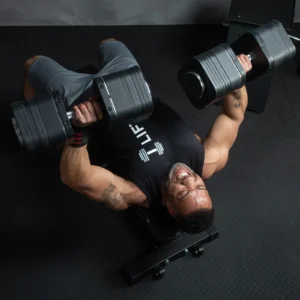
Too Tough to Replace: The Durability Dilemma of Ironmaster Dumbbells

ATX-BSM-600 Assembly Tips
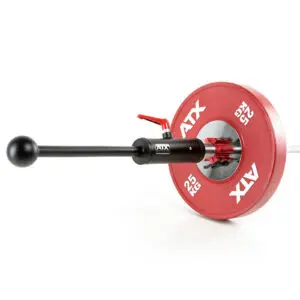
What Happened to the ATX-CAL Club Barbell Attachment?

Iso Lateral Leg Press vs Leg Press
